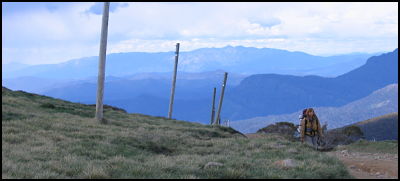Wilderness Wear makes a range of premium travel and outdoor technical clothing and raingear (including baselayer, mid layer, socks, casual, travel and waterproof). They also have a ‘value brand’ called Three Peaks which produces clothing and footwear.
My summary
Wilderness Wear is a rarity amongst the Australian owned outdoor gear companies – they actually produce their products here. From the company: “Every part of Wilderness Wear is Australian. … all of our products are made in Australia. We see that as a significantly better prospect than outsourcing to less experienced labour forces in countries beyond our shores”.
For this reason alone it is worth considering supporting them where you can. The Three Peaks range uses a “combination of Australian and overseas material and manufacturing sources”.
category: Leader (***)
Sustainability criteria:
- reporting framework: how does the company benchmark what it does/ reports? Does it use one of the international accredited systems
No information
- information on resources used – recycled materials, use of renewable materials, etc
The general philosophy of the company when it comes to reducing environmental impact is covered in the following statement: “Being a company that exists for enjoyment of the outdoors, we believe Wilderness Wear should do its best to protect the very resources that make this possible. Our ecology platform includes a directive to always use fibre and material products that are environmentally friendly and traceable, such as mulesed-free wool. Being our own manufacturer provides opportunity to self-monitor everything we produce, right down to packaging from 100% post-consumer waste boards and papers. Our carbon responsibility leads us to source raw materials from like-minded, carbon conscious suppliers and to generate low company emissions ourselves. Overall, we regard these measures as the way to leave the least mark on our precious environment”.
The company has a strong focus on use of wool – obviously this is a renewable resource.
- energy consumption & carbon dioxide emissions
Merino wool is extremely durable, meaning products made from this material will last a long time. The product itself comes from a renewable resource, reducing energy used and emissions produced. The fact that the sheep producing the wool come from within a few hundred kilometres of the factory in Melbourne, transport emissions are low. Larger and international companies increasingly draw materials from a range of countries in order to make a single product (for instance, see the ‘Footprint Chronicles‘ from Patagonia, which outlines where a product comes from in physical terms:
So to produce the raw material close to point of manufacture does make Wilderness Wear a stand out company in the very crowded outdoor market.
They do also produce polypropylene and Polartec products. Polartec fabrics are 100% polyester and the company says that they “try and use as much recycled polyester as possible” and in terms of Polartec material, they just use Polartec® from the US company, rather generic poly fleece, meaning all of this is post-consumer waste..
- distance travelled
For consumers based in Australia/ NZ, the travel miles of the finished product, regardless of whether they are made from wool or other materials, are relatively low, given that the equipment is made here and often uses Australian materials in the product, especially the wool, which comes from “the Western District of Victoria and the cooler regions of Tasmania”.
- waste generated
- water consumption
- working conditions
The products are made in Melbourne, and Wilderness Wear does all is work in house (ie, no out sourcing), meaning they can control the working conditions throughout their product chain. For raw materials, the company says that they know what is happening: “Wilderness Wear, (is) a self-manufacturer, …. but remains extremely mindful of the issue of traceability throughout its materials supply chain: How ‘clean’ is the factory process that produces synthetic fibre? What wool dyeing techniques are adopted? Is fair employment practiced by foreign suppliers? All of the company’s partners have been on board long-term and are like-minded. We know them, their beliefs and their ethics”.
There is no specific information available on the site about conditions.
- other environmental claims or benefits
The company is involved in a range of sponsorship programs, although some of these, such as rally car racing, are hardly environmentally friendly.
An animal welfare issue that comes with use of wool is the question of mulesing, a controversial practice that is aimed to stop sheep from dying of flystrike. The companies position is here.
- details on who stocks the item/ where to find it/ where to get further information
Their products are available on line.



The best way to show that your brand is sustainable is to fill up greenroomvoice Ecorating® ( Patagonia, North-Face, Burton, Vaude, Volkl… are many more already did it)
This rating is now used by ISPO to give its prestigious awards.
Feel free to visit greenroomvoice.com for more.